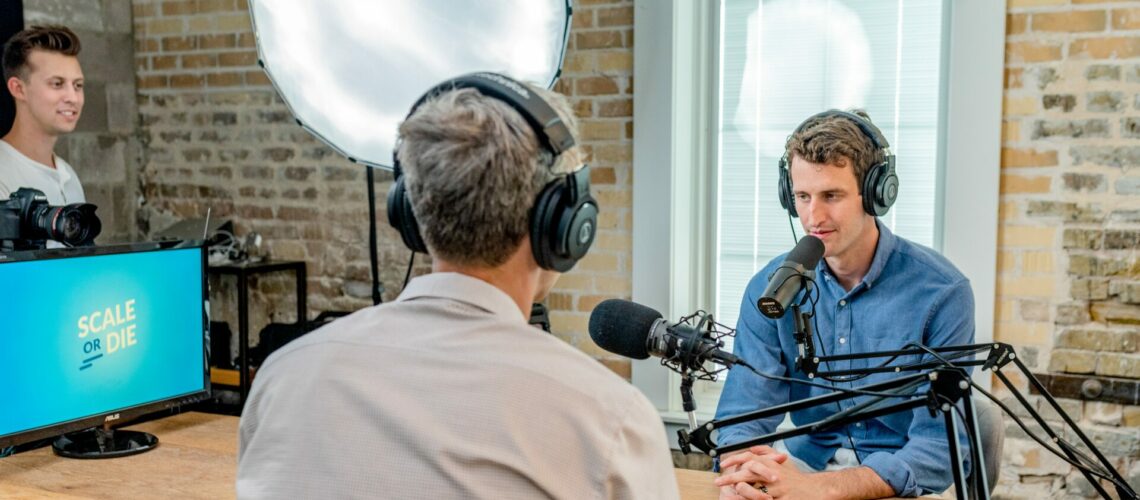Over the past few years, there’s been a palpable shift in the media landscape with the rise of podcasts. The emergence and subsequent dominance of podcasts have upended traditional broadcasting formats and changed the way we consume audio content. This “audio revolution” has not only paved the way for storytellers and influencers to reach global audiences but has also prompted the broadcasting giants to reassess, innovate, and evolve. Rick Saleeby, a notable figure in the world of broadcasting, provides unique insights into this transformation. As Saleeby notes, the transition has been both challenging and exhilarating for traditional broadcasters, with the industry forced to rethink its strategies.
The Emergence of Podcasts
The growth of podcasts is nothing short of meteoric. It began as a niche medium, a domain for tech enthusiasts and indie creators. However, as technology evolved and smartphones became ubiquitous, podcasts transformed into a mainstream medium. They offered an alternative to traditional radio, presenting diverse topics from true crime to education and everything in between. Rick Saleeby points out that the on-demand nature of podcasts, combined with the ability to listen anywhere at any time, is what truly set them apart. This ease of access, combined with the variety of topics, has made podcasts a preferred choice for many, setting them on a trajectory for further growth.
The Audience’s Paradigm Shift
The modern audience craves content that can be consumed on-the-go. With increasingly hectic lifestyles, people began leaning towards content that didn’t demand visual engagement, something they could listen to during their commute, workouts, or even as they do household chores. Podcasts, which offer both episodic and serialized content, catered perfectly to this need. Furthermore, they introduced a personal touch, with hosts often speaking directly to their listeners, creating a sense of intimacy and community. Rick Saleeby highlights the significance of this shift, emphasizing how the line between broadcaster and listener has become increasingly blurred, fostering a closer connection. This new form of engagement is reshaping the expectations of audiences worldwide.
Traditional Broadcasting’s Response
Rather than being threatened by the rise of podcasts, many traditional broadcasters recognized the medium’s potential and started adapting. Many radio stations began converting their popular shows into podcast formats, ensuring their content reached audiences who might have missed the live broadcast. Additionally, some media companies started collaborating with or outright acquiring successful podcast creators, thereby diversifying their content and tapping into an already established listener base. This strategic move not only broadens their reach but also signals a progressive approach towards modern content delivery.
Integration of Multimedia Elements
While podcasts primarily thrive on audio, the lines between different media are blurring. Enhanced podcasts, which include images, videos, or infographics, offer a richer experience for listeners who want more than just audio. Traditional broadcasters, with their experience in television and video production, are well-equipped to produce such content. Rick Saleeby elucidates this point by mentioning how broadcasting giants, with their vast resources, can elevate the podcast experience by seamlessly integrating multimedia elements, setting new industry standards. As audiences continue to demand more immersive experiences, this multimedia approach could become a norm.
Monetization and Revenue Streams
Monetization is an essential aspect for content creators, and the podcast industry is no different. While early podcasters relied heavily on sponsorships and donations, the evolution of the medium has opened up diverse revenue streams. Subscription models, premium content, and live podcast shows are just a few examples. Traditional broadcasters, having navigated the monetization maze for decades, can provide expertise and infrastructure, ensuring podcast creators reap the maximum benefits. With the increasing popularity of podcasts in the pop culture landscape, there’s vast potential for revenue diversification, ensuring sustainability in the long run.
Future Implications and Growth
As the podcast industry continues to mature, we’ll likely witness further integration between traditional broadcasting and podcasting. The synergies between these mediums offer immense potential for content creators and broadcasters alike. The challenge lies in striking a balance: retaining the authenticity and intimacy of podcasts while leveraging the resources and expertise of traditional broadcasting. Experts like Rick Saleeby believe that this fusion will pave the way for innovative content, pushing the boundaries of what’s possible in the audio realm. As technologies continue to advance, the potential for groundbreaking innovations in this sector seems limitless.
Conclusion
The rise of podcasts is a testament to the ever-evolving nature of media. As audiences adapt and their preferences change, so must the mediums that serve them. Traditional broadcasting, with its rich history and vast resources, is uniquely positioned to enhance and elevate the podcasting experience. With industry luminaries like Rick Saleeby leading the charge, the future of audio content seems boundlessly promising. As we look ahead, the symbiotic relationship between traditional broadcasting and podcasts will likely define the next era of audio content.

